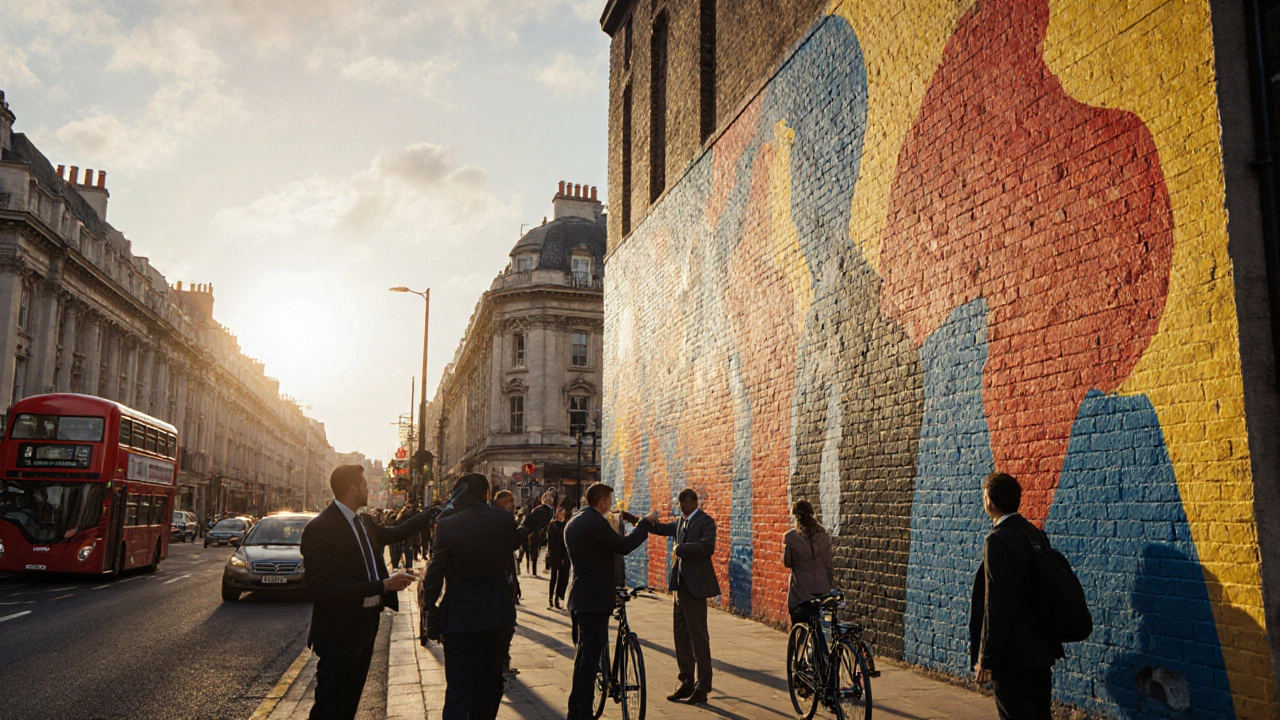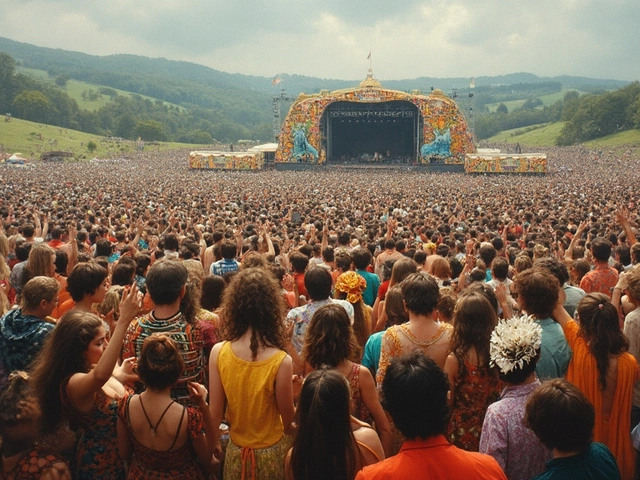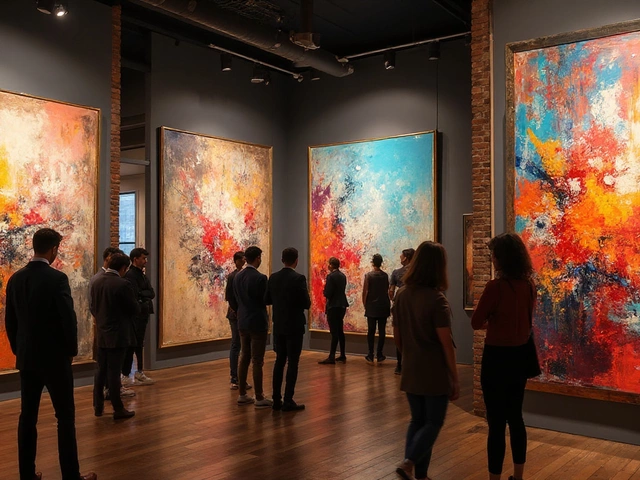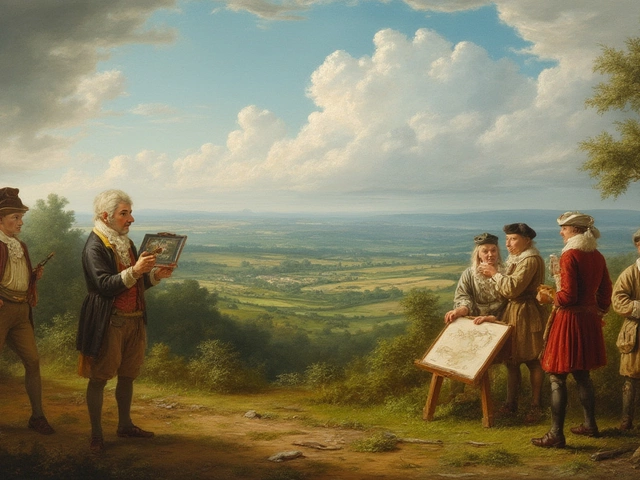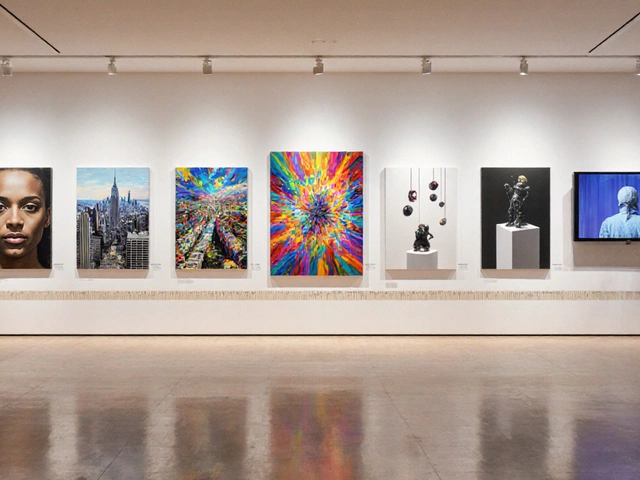Understanding Street Art: Key Goals and Concepts
Main Goals of Street Art
Communication: Directly sharing ideas with the public to spark dialogue or change.
Expression: Providing a platform for self-expression without institutional barriers.
Social Impact: Addressing issues like inequality, politics, or cultural norms through visual storytelling.
Community Building: Engaging local residents in collaborative projects and shared experiences.
Urban Transformation: Enhancing neglected spaces and contributing to neighborhood identity.
Related Concepts in Street Art
Graffiti: Letter-based art often associated with territorial claims or peer recognition.
Murals: Large-scale paintings that tell stories or celebrate communities.
Public Spaces: Areas accessible to all citizens where street art can be encountered daily.
Social Commentary: Critical perspectives on politics, economics, or culture using satire or symbolism.
Legal Walls: Sanctioned surfaces allowing artists to create without legal consequences.
Comparison: Street Art vs. Traditional Public Art
| Aspect | Street Art | Traditional Public Art |
|---|---|---|
| Creation Process | Spontaneous, artist-led | Commissioned, planned |
| Location | Streets, trains, abandoned walls | Parks, plazas, government buildings |
| Audience Interaction | Immediate, daily engagement | Less frequent interaction |
| Legal Status | Gray area; legal walls provide safe zones | Fully sanctioned |
| Message Style | Bold, concise, often political | Varies; abstract, commemorative, or decorative |
Measuring Impact
- Public Reaction: Social media engagement, surveys, or site visits
- Media Coverage: Articles, blogs, or documentaries amplifying the message
- Policy Influence: Changes in local governance due to the artwork
- Community Participation: Number of residents involved in creating or supporting the piece
- Longevity: Duration of visibility or restoration efforts
Misconceptions Busted
- Myth: All street art is illegal. Fact: Legal walls and commissioned works exist globally.
- Myth: It lacks artistic value. Fact: Many street artists gain recognition in museums and academia.
- Myth: It’s just colorful tagging. Fact: Works often carry deep political or cultural meanings.
How to Get Involved
- Research local laws and locate legal walls or community projects
- Join established collectives for mentorship and collaboration
- Define your message clearly and relate it to public interest
- Plan and test designs before execution
- Engage the neighborhood in your creative process
- Document and share your journey to build awareness
Reflection Prompt
Think about a street art piece you’ve seen recently. What was its message? How did it affect the surrounding environment or community? Share your thoughts below:
Key Takeaways
- The core aim of street art is to communicate ideas directly to the public, often sparking dialogue or change.
- Artists use the city as a canvas to blend self‑expression, social commentary, and community building.
- Legal walls and sanctioned projects help bridge the gap between underground culture and mainstream acceptance.
- Success is measured by impact-whether a piece provokes thought, revitalizes a neighbourhood, or influences policy.
- Street art differs from traditional public art in its spontaneity, audience interaction, and relationship to urban life.
What Street Art Really Is
When we talk about Street Art, we are referring to a visual practice that transforms public spaces-walls, sidewalks, trains-into canvases for artistic expression outside the confines of galleries or museums. Unlike fine‑art paintings that sit behind glass, street art lives in the open, exposed to weather, commuters, and the ever‑changing cityscape.
Why Artists Create Street Art
Artists turn to the streets for many reasons. Below are the most common motivations, each tied to a broader goal.
- Self‑Expression: The need to share personal stories or aesthetics without institutional gatekeepers.
- Social Commentary: Using bold visuals to critique politics, inequality, or cultural norms.
- Community Engagement: Inviting locals to participate, co‑create, or simply enjoy a shared visual experience.
- Urban Beautification: Replacing graffiti tags or bland concrete with color and imagination.
- Activism: Turning walls into protest posters, raising awareness for causes ranging from climate change to human rights.
Each motivation points back to a single overarching goal: to spark a reaction in the public sphere.
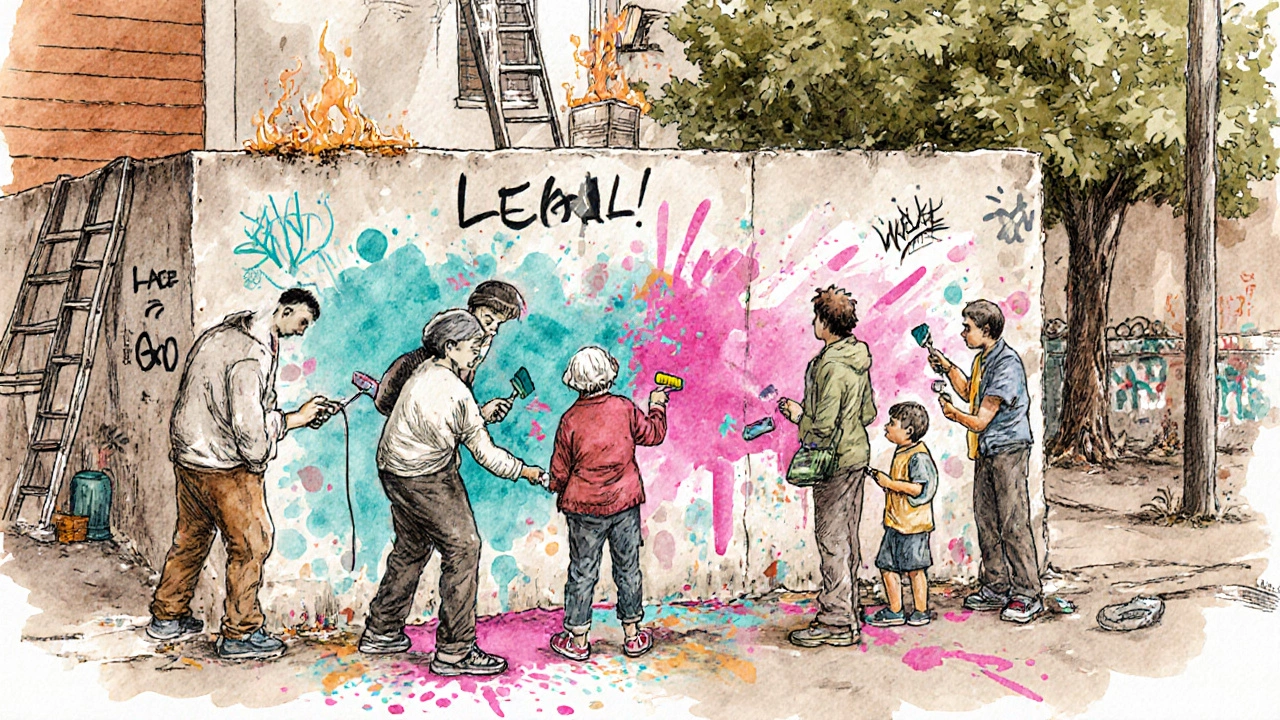
Key Concepts and Related Practices
Street art overlaps with several related forms. Understanding these helps clarify its purpose.
- Graffiti is a lettering‑focused style, often illegal, that emphasizes tags and crews' identities. While graffiti can be purely aesthetic, it frequently serves as a claim to territory or a shout‑out to peers.
- Mural refers to large‑scale paintings that usually tell a story or celebrate a community. Murals can be commissioned or community‑driven, blurring the line between street art and public art.
- Public Space is any area open to citizens-streets, parks, transit hubs-where art can be encountered in daily life.
- Social Commentary provides critical perspectives on politics, economics, or culture, often using satire or symbolism.
- Community Engagement involves interactive projects that invite local residents to contribute ideas, paint, or simply discuss the work.
- Urban Culture encompasses the lifestyles, music, fashion, and attitudes that develop within city environments and influence street art aesthetics.
- Legal Wall is a sanctioned surface where artists can paint without fear of prosecution, often managed by municipalities or NGOs.
How Street Art Differs From Traditional Public Art
| Aspect | Street Art | Traditional Public Art |
|---|---|---|
| Creation Process | Often spontaneous, unofficial, artist‑led | Commissioned, planned with architects or officials |
| Location | Public streets, trains, abandoned walls | Parks, plazas, government buildings |
| Audience Interaction | d>Immediate, daily commuters engage directlyVisitors may seek out the piece, less frequent interaction | |
| Legal Status | Often gray area; legal walls provide safe zones | Fully sanctioned, part of city planning |
| Message Style | Bold, concise, often political or humorous | Varies; can be abstract, commemorative, or decorative |
The comparison shows why street art’s ultimate goal leans heavily on immediacy and dialogue, while traditional public art often seeks permanence and official representation.
Impact on Communities and Urban Culture
When a wall transforms from a blank slab into a vibrant canvas, the surrounding neighbourhood feels a shift. Studies from the University of British Columbia (2023) found that neighborhoods with active street‑art programs saw a 12% rise in foot traffic and a 7% increase in small‑business revenues within six months.
Beyond economics, street art can reshape identity. In Vancouver’s Main Street, a series of murals celebrating Indigenous stories has become a cultural landmark, encouraging schools to incorporate local history into curricula. The visual narrative builds pride and eases cultural tensions.
However, there are downsides. Gentrification can follow a surge of artistic attention, pushing out longtime residents. Artists must be mindful of who benefits from their work and strive for inclusive collaborations.
Legal Landscape and the Role of Legal Walls
Most cities classify unsanctioned painting as vandalism, carrying fines or arrest. Yet many municipalities recognize the value of street art and designate Legal Walls where artists can work openly. Toronto’s “Graffiti Bylaw Amendment” (2022) created a registry of 45 legal walls, slashing illegal tagging incidents by 30%.
Legal walls serve two goals: they protect artists from prosecution and give cities a controlled way to curate visual culture. When used thoughtfully, they amplify the ultimate purpose of street art-public communication-without the risk of removal.
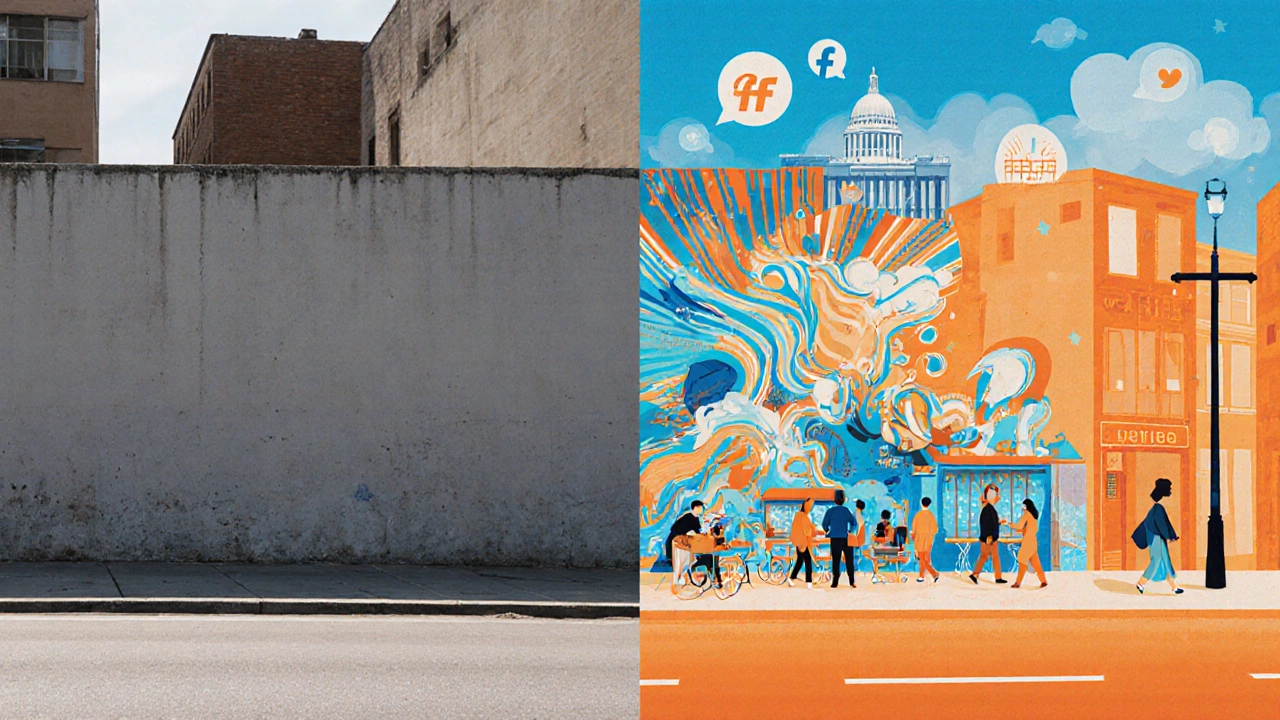
Measuring Success: When Street Art Meets Its Goal
Because the purpose is often intangible, artists and cities rely on qualitative and quantitative markers:
- Public Reaction: Social‑media shares, comments, or on‑site surveys that indicate whether people understood or resonated with the piece.
- Media Coverage: Articles, blogs, or documentaries that amplify the message beyond the immediate location.
- Policy Influence: Cases where a mural spurs local government to address the highlighted issue, such as homelessness or climate action.
- Community Participation: Number of locals who helped paint or organized events around the artwork.
- Longevity: While street art is often temporary, works that endure or are restored signal lasting relevance.
When any of these markers light up, the piece has likely achieved its ultimate goal.
Common Misconceptions About Street Art
Many people lump all graffiti under “vandalism.” In reality, street art is a nuanced field with distinct intents. Here are a few myths busted:
- Myth: All street art is illegal. Fact: Legal walls and commissioned projects are growing worldwide.
- Myth: It has no artistic value. Fact: Artists like Banksy, Shepard Fairey, and local Vancouver creators win museum exhibitions and academic study.
- Myth: It’s just “colorful tagging.” Fact: Many works carry deep political messages, cultural storytelling, or urban documentation.
Getting Involved: A Quick Guide for Aspiring Artists and Supporters
- Research local laws and find a Legal Wall or community‑led project.
- Connect with established street‑art collectives; Vancouver’s “Vancity Mural Project” offers mentorship.
- Define the message you want to convey-keep it clear and relatable.
- Sketch on paper or digitally; test colors on small surfaces first.
- Engage the neighborhood: host a workshop or ask residents for input.
- Document the process and share it online; encourage dialogue.
Following these steps aligns personal creation with the broader goal of meaningful public communication.
Frequently Asked Questions
What distinguishes street art from graffiti?
Graffiti focuses on stylized lettering and often serves as a personal signature, while street art uses broader visual language-characters, symbols, murals-to convey ideas, critique society, or beautify spaces.
Can street art be legally commissioned?
Yes. Many cities allocate legal walls or public‑art budgets for commissioned street‑art projects, turning what was once an underground activity into a recognized element of urban planning.
How do artists measure the impact of their work?
Impact is gauged through public reaction (social media mentions, surveys), media coverage, policy changes sparked by the piece, community participation numbers, and sometimes the longevity of the artwork.
Do street‑art pieces ever get removed?
Yes. Unauthorized works can be painted over by city crews or property owners. However, pieces on legal walls or those embraced by the community are often preserved or restored.
Is street art a good career path?
While many artists supplement income with commissions, gallery sales, or merchandise, a sustainable career often blends public projects, collaborations, and brand partnerships. Building a strong portfolio and networking with city programs helps turn passion into livelihood.
